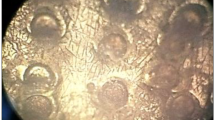Abstract
The problem of environmental pollution from CO2 emissions is drawing worldwide attention. With this trend, within the automotive industry, development of lightweight parts and application examples are increasing to react to environmental regulations and to obtain better mileage. Furthermore, with the demands of the time to cut energy consumption and to protect the environment, recycling aluminum, which is being widely used for daily necessities as well as for industrial purposes, is important. Recycling aluminum can be critical in environmental protection, resource saving, and both pollution and waste prevention. The demand in aluminum alloy is increasing since it provides better intensity, lower density and superior corrosion resistance when compared with steels. In particular, the Al-Si-Cu Aluminum alloy, which possesses outstanding castability and mechanical properties, is extensively utilized for automotive parts as a cylinder head, among others. Thus, this study will use test pieces melting and casting commercial A319 ingot and other pieces remelting cutting chips which are discharged and processed from automotive parts manufactured with A319 alloy to investigate changes in microstructure, hardness and tensile tests. Through these processes, this study aims to research the possibilities of remelted A319 alloy to be utilized as a casting material based on characteristic comparison of the material.
Similar content being viewed by others
References
Jorstad, J., “Die Casting Engineer,” Future Technology in Aluminum Die Casting, vol. 9, pp. 18–25, 2006.
Trenda, G., “Die Casting Alloy for Ductile, Thin-Walled Structural Parts,” Casting Plant and Technology International, Vol. 22, No. 1, p. 28, 2006.
Sigworth, G., Koch, H., and Krug, P., “High Strength, Natural Aging Aluminum Casting Alloys for Automotive Applications,” Proc. of the 40th Annual Conference of Metallurgists and Electrometallurgy, pp. 349–358, 2001.
Koch, H. and Franke, A. J., “Development of a Super Ductile High-Pressure Diecasting Alloy for Crash Relevant Parts,” North American Die Casting Association, World of Die Casting: 1999 Transactions, pp. 269–272, 1999.
European Aluminium, “Aluminum and Energy in the EU,” https://www.european-aluminium.eu/(Accessed 19 MAR 2018)
Aluminium for Future Generations, “Implementing the OECD Environmental Strategy Meeting,” http://primary.world-aluminium.org/home/(Accessed 19 MAR 2018)
Schmitz, C., “Handbook of Aluminium Recycling,” Vulkan-Verlag GmbH, pp. 27–30, 2006.
Kim, H. S., Kim, H. M. and Kim W. Y., “Trends in the Aluminum Scrap Recycling Industry,” Trends in Metals and Materials Engineering, vol. 23, no. 1, pp. 23–30, 2010.
Sharma, C., Nakagawa, T., and Takenaka, N., “Recent Development in the Recycling of Machining SWARFs by Sintering and Powder Forging,” Ann CIRP, vol. 25, no. 1, pp. 121–125, 1977.
Gronostajski, J., Kaczmar, J., Marciniak, H., and Matuszak, A., “Direct Recycling of Aluminium Chips into Extruded Products,” Journal of Materials Processing Technology, vol. 64, Nos. 1–3, pp. 149–156, 1997.
Jirang, C. and Roven, H. J., “Recycling of Automotive Aluminum,” Transactions of Nonferrous Metals Society of China, vol. 20, no. 11, pp. 2057–2063, 2010.
Boileau, J. M. and Allison, J. E., “The Effect of Solidification Time and Heat Treatment on the Fatigue Properties of a Cast 319 Aluminum Alloy,” Metallurgical and Materials Transactions A, vol. 34, no. 9, pp. 1807–1820, 2003.
Sasaki, K. and Takahashi, T., “Low Cycle Thermal Fatigue and Microstructural Change of AC2B-T6 Aluminum Alloy,” International Journal of Fatigue, vol. 28, no. 3, pp. 203–210, 2006.
Roy, N., Samuel, A., and Samuel, F., “Porosity Formation in AI-9 Wt Pct Si-3 Wt Pct Cu Alloy Systems: Metallographic Observations,” Metallurgical and Materials Transactions A, vol. 27, no. 2, pp. 415–429, 1996.
Kent, D., Schaffer, G., and Drennan, J., “Age Hardening of a Sintered Al-Cu-Mg-Si-(Sn) Alloy,” Journal of Materials Science and Engineering: A, vol. 405, Nos. 1–2, pp. 65–73, 2005.
Woo, K. D., Lee, J. S. and Kim, S. W., “Calorimetric In-Vestigation of Precipitation Kinetics in AI-Mg-Si-X(Cr, Be) Alloys,” Metals and Materials, vol. 5, no. 4, pp. 363–368, 1999.
Ammar, H., Moreau, C., Samuel, A., Samuel, F., and Doty, H., “Influences of Alloying Elements, Solution Treatment Time and Quenching Media on Quality Indices of 413-Type Al-Si Casting Alloys,” Materials Science and Engineering: A, vol. 489, Nos. 1–2, pp. 426–438, 2008.
Crowell, N. and Shivkumar, S., “Solution Treatment Effects in Cast Al-Si-Cu Alloys (95-107),” Transactions of the American Foundrymen’s Society, vol. 103, pp. 721–726, 1995.
ASTM E8-04, “Tension Testing of Metallic Materials,” ASTM International, 2004.
Davis, J. R., “Aluminum and Aluminum Alloys,” ASM International, 1993.
Flemings, M. C., “Solidification Processing,” Metallurgical Transactions, vol. 5, no. 10, pp. 2121–2134, 1974.
Kim, H.-J., “Effects of Melt Super-Heating on the Shape Modification of β-A1FeSi Intermetallic Compound in AC2B Aluminum Alloy,” Journal of Korea Foundry Society, vol. 21, no. 3, pp. 179–186, 2001.
Author information
Authors and Affiliations
Corresponding author
Rights and permissions
About this article
Cite this article
Kim, DH., Kim, JH., Kim, YG. et al. Evaluation of Microstructure and Mechanical Properties on Solution Heat Treatment of Recycled A319 Cutting Chip. Int. J. of Precis. Eng. and Manuf.-Green Tech. 5, 427–433 (2018). https://doi.org/10.1007/s40684-018-0018-5
Received:
Revised:
Accepted:
Published:
Issue Date:
DOI: https://doi.org/10.1007/s40684-018-0018-5




